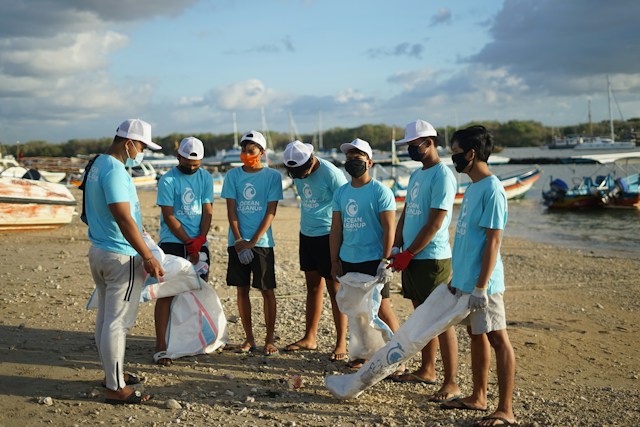The modern world is faced with an escalating crisis of environmental degradation. Yet, amid these challenges, there exists a silver lining. Regular involvement in community initiatives aimed at cleaning up the environment and conserving it for future generations offers various benefits. Besides fostering a sense of unity and responsibility, these activities can also stimulate physical fitness and environmental stewardship. This article delves into how such involvement can lead to these positive outcomes.
The Link Between Environmental Activism and Physical Fitness
Environmental activism may not be your first thought when you consider ways to maintain physical fitness. However, the connection between the two is solid, and it begins with understanding the nature of the activities involved in community clean-up and conservation efforts.
A lire également : What are the benefits of cold showers for your immune system?
Involvement in community clean-up exercises often involves physical activities such as walking, bending, picking up trash, and carrying waste to designated collection points. These activities, while seemingly mundane, can contribute significantly to your daily physical activity needs. They can help burn calories, strengthen muscles, and improve cardiovascular health.
Similarly, conservation efforts can involve a range of physically demanding tasks. These can include tree planting, property restoration, trail maintenance, and more. These activities demand physical exertion that can boost cardiovascular health, muscle strength, flexibility, and agility.
A découvrir également : Can urban art installations and graffiti promote dialogue on public health and social issues?
In essence, regular involvement in community clean-up and conservation activities can serve as a form of ‘green exercise’ – a physical exertion that happens in an outdoor, natural environment and offers combined benefits of traditional exercise and exposure to nature.
The Role of Community Involvement in Fostering Environmental Stewardship
Environmental stewardship refers to responsible use and protection of the environment through sustainable practices. The concept emphasizes the importance of everyone playing their part in preserving the planet for future generations. One way to foster this sense of responsibility is through active involvement in community clean-up and conservation initiatives.
When you engage in these activities, you become more aware of the environmental issues in your community. This awareness can inspire a commitment to addressing these challenges and encourage more sustainable personal behaviors. It can motivate you to reduce waste, recycle more, and make more sustainable consumption choices.
Moreover, regular involvement in these activities can influence others in your community to do the same, creating a ripple effect of positive environmental behavior. This collective effort can significantly contribute to environmental preservation and sustainability, underlining the crucial role of environmental stewardship in the journey towards a more sustainable planet.
The Reciprocal Relationship Between Physical Fitness and Environmental Stewardship
Physical fitness and environmental stewardship are interconnected in more ways than one might initially realize. They sustain a reciprocal relationship that enhances the value of community clean-up and conservation initiatives.
On one hand, these initiatives offer an outdoor setting for physical activities, which is known to have several health benefits beyond those obtained from indoor exercises. Exposure to nature during exercise can boost mood, reduce stress, improve cognitive function, and enhance overall well-being. Therefore, by boosting physical fitness, these initiatives make it more likely for individuals to participate regularly and stay committed to the cause.
On the other hand, the activities inspire environmental stewardship, which can, in turn, motivate individuals to maintain their physical fitness. A study published in BMC Public Health found that individuals who feel a strong connection with nature tend to engage more in physical activity. Environmental stewardship can foster a strong bond with nature, thereby encouraging more physical activity and subsequently boosting fitness levels.
Breaking Down the Barriers to Regular Involvement
Despite the evident benefits, regular involvement in community clean-up and conservation initiatives is not without challenges. These can range from lack of time and motivation to limited accessibility to green spaces.
However, overcoming these barriers is possible and worthwhile. One way is through organizing these initiatives in a way that makes them enjoyable and socially engaging, which can boost participation. Another approach is to ensure accessibility, making it easier for everyone to participate, regardless of their physical ability or location.
Additionally, promoting the dual benefits of these initiatives – improved physical fitness and environmental stewardship – can increase motivation to participate. The idea that you are not only improving your health but also contributing to a greener and healthier planet can serve as a powerful incentive for regular involvement.
In conclusion, regular involvement in community clean-up and conservation initiatives can indeed improve physical fitness and environmental stewardship. It offers a unique and effective way to tackle individual health challenges and environmental issues simultaneously, contributing to personal well-being and a sustainable future.
Environmental Justice and Public Health: An Interplay Highlighted by Community Initiatives
The concept of environmental justice has gained significant attention in recent years, particularly in the United States. This movement acknowledges that environmental degradation and climate change disproportionately affect disadvantaged communities, a notion that is also supported by numerous scientific studies. Environmental justice advocates for all communities to enjoy clean air, drinking water, and a healthy living environment, regardless of their socioeconomic status.
In this context, community clean-up and conservation activities present an opportunity to address these disparities while simultaneously promoting public health. Physical activity is a key determinant of health and well-being, and it plays a crucial role in disease prevention. By providing opportunities for physical exertion, these initiatives can potentially improve the health of individuals who may not have access to other forms of exercise.
Furthermore, these efforts can potentially bring about tangible improvements in environmental quality. They contribute to waste management and foster the implementation of sustainable practices like recycling and composting. Federal and state local governments in the United States, recognizing the value of these activities, have introduced executive orders and provided technical assistance to encourage their widespread adoption.
Moreover, these initiatives have been successful in catalyzing citizen science – the active participation of citizens in scientific research. Participants involved in beach cleans or other conservation activities have contributed valuable data to studies analyzing the extent and character of litter, furthering our understanding of this critical environmental issue.
The Federal Government, Clean Energy, and the Role of Conservation Activities
The pursuit of clean energy is a key strategy in addressing climate change and promoting environmental protection. The federal government has made significant strides in this area, supporting the development of renewable energy sources and encouraging energy-efficient practices.
Community clean-up and conservation activities can complement these efforts. They provide a platform for educating the public about the importance of clean energy and the role they can play in its adoption. For instance, activities could incorporate aspects of energy conservation, teaching participants about energy-efficient practices they can adopt in their daily lives.
Additionally, conservation activities often promote the preservation of natural landscapes and resources, which are crucial for sustainable development. For instance, tree planting events contribute to carbon sequestration, mitigating the impacts of climate change. They also provide habitat for wildlife and preserve biodiversity, underscoring the importance of these activities for environmental health and quality of life.
Moreover, by engaging citizens in these initiatives, we can cultivate a deeper understanding and appreciation of the environment, which can translate into support for clean energy policies and sustainable behaviors.
Conclusion: Towards a Sustainable Future through Physical Fitness and Environmental Stewardship
Regular involvement in community clean-up and conservation initiatives indeed presents a unique opportunity to improve physical fitness and foster environmental stewardship. These activities contribute to public health by providing opportunities for physical activity and strengthening the connection between individuals and their environment, thus improving their quality of life.
Moreover, they contribute to environmental justice by addressing disparities in environmental quality and health. By advocating for a cleaner, healthier environment, they benefit all members of society, particularly disadvantaged communities. Furthermore, these initiatives complement federal government efforts towards clean energy and sustainable development.
Engaging in these activities can empower individuals, giving them a sense of ownership of their environment. It’s a powerful message that says, ‘You can make a difference.’ It rallies citizens together to tackle environmental issues and inspires them to adopt sustainable practices in their everyday lives.
In essence, community clean-up and conservation activities are a win-win strategy for individual well-being and environmental protection. By promoting physical fitness and environmental stewardship, they are making strides towards a healthier populace and a more sustainable future.











